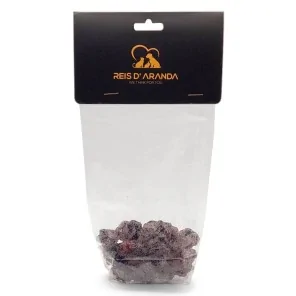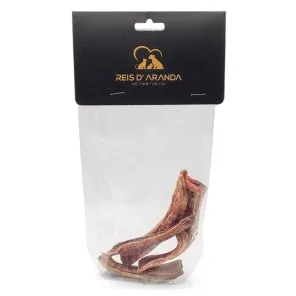Its name says it all: the Vienna blue rabbit comes from Austria. Not only is it beautiful with its shiny blue-grey...
THE ANGORA RABBIT
THE ORIGIN OF THE ANGORA RABBIT
The Angora rabbit was already mentioned in 1755 by the naturalist Count Buffon. The Angora rabbit is a mutation that appeared simultaneously in various parts of Europe; something similar to what happened with the mutation of the Rex rabbit, with its extra-short fur.
France began the exploitation of the Angora rabbit in small farms to export the fabrics for clothing, especially for the treatment of rheumatic diseases. England, the recipient country of these exports, began to develop its own Angora rabbit farm.
THE DIFFERENT VARIETIES OF THE ANGORA RABBIT
Within the Angora breed, we can find five sub-breeds or "varieties". Although they are considered varieties of the same breed, crossing between them is not permitted as they have different characteristics and standards which would only result in mongrels and undesirable characteristics.
- ENGLISH ANGORA: 2.5-4kg. This is the most popular variety of Angora as a pet and has the most hair. Should be sheared every 3 months.
- FRENCH ANGORA: 4-5kg. Very similar to the English Angora, but the coat on the head is short (except for the ears, which have a long tuft at the tip). It should be shorn every 3 months.
- GIANT ANGORA: The largest, with an adult weight between 4.5 and 6 kg and can only be found in REW (albino) colour. The hair is NEVER cut.
- SATIN ANGORA: They never exceed 4kg in adult weight, have a shorter coat than the other angoras and have a spectacular gloss which gives them their name (satin).
- DWERG ANGORA (Dwarf Angora): Its presence in Spain is extremely rare, being popular only in the Netherlands. Its adult weight never exceeds 1.750kg and physically it is a small version of the English Angora.
KEEPING THE ANGORA RABBIT
At this point, we will focus on keeping the English Angora rabbit as it is the most popular of all the Angora varieties.
The English Angora rabbit requires daily brushing with an extra long barbed butter brush, which we will use opening the fur to the root to avoid knots forming at the root; we will be patient and we will put special emphasis on the complicated areas: throat, chest, belly, legs and buttocks.
If our English Angora is a "full face" or "maxi full face" we will also pay attention to the eyes and clean them with a narrow-toothed comb. We will talk about this type of face in the article "The different faces of the Angora rabbit".
Every three months we will have to shear the rabbit using a 7F (3mm) blade, not only for the needs of the coat itself, but also for hygiene. The "fur" of the pure Angora rabbit is not hair as such, but is wool (gene L) and has a very fast growth.
We will shear only the body area, leaving out the hands, feet, tail and head, which we will trim a little with scissors to give it a more attractive and well-groomed appearance.
It is very important to get our Angora rabbit used to being groomed from a very young age, in this way the process will be relaxing and simple.
THE ANGORA RABBIT AS A PET
The Angora rabbit (especially the English one) is one of the favourite breeds as a pet, having a special impact in France. Their sweet and friendly character, the beauty of their fur, how photogenic they are and how easy they are to keep as they can be sheared without fear of follicle damage or visual unpleasantness, make them an ideal choice for owners or potential owners looking for a sociable, cute and cheerful rabbit.
The price of an English Angora from an ethical breeder is not cheap (all are always microchipped), with European prices ranging from 200€ to 660€.
Maintenance is relatively easy for families compared to other breeds, if they comply with the rule of taking them to the groomer to have their wool cut every 3 months. The Angora, like all other rabbits, is not bathed unless it is an emergency situation (domestic abandonment, paralysis of the hindquarters...).
THE ANGORA RABBIT IN SPAIN
The Angora rabbit is a very rare breed in Spain, especially the English Angora and the Dwarf Angora, of which there are no more than one or two breeders on a national level.
Although it is true that many times in the shops we see "dwarf Angora" specimens for sale, these are nothing more than mongrels of dubious quality with the M gene (mane) mixed with the L gene (wool), which gives them a totally incorrect coat and appearance. There are no real Angoras abandoned in any shelter in Spain.
For an animal to be a purebred, it must always be identified from the breeder's home (chip, ring or tattoo) and have a pedigree endorsed by a national or international club with a minimum of 4 registered generations.
CONCLUSION
The Angora rabbit (any of its varieties) is an amazing and striking breed that dazzles anyone who sees it, being sweet, happy and calm animals. Its maintenance is constant and simple, but it requires a great commitment from its owner, being ideal for families with children or other pets.
Leave a comment
Log in to post comments
Comments
Unos conejos preciosos
By: Raquel On 05/05/2024Una pasada, me encantaría tener uno en el futuro (¡tendré que ahorrar para ello! ^^U)
Auténticos peluches.
















